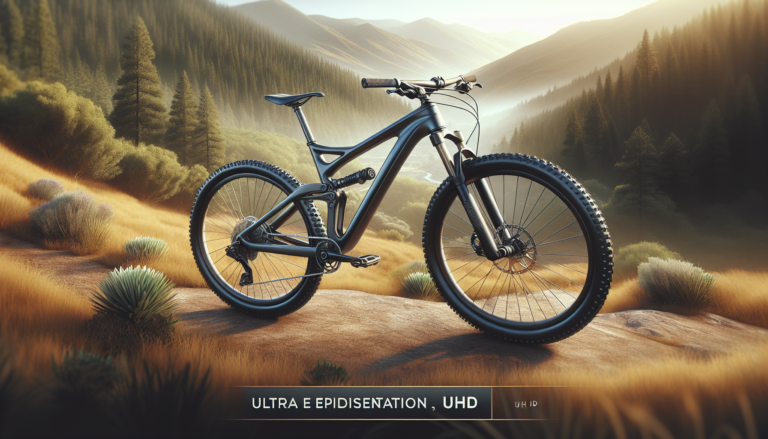When it comes to mountain biking, finding the right bike size is crucial for a comfortable and enjoyable riding experience. One common question among riders is, “What size person is a 26 inch bike for?” In this comprehensive guide, we’ll explore the factors that determine the ideal bike size for you, focusing on the popular 26 inch mountain bike.
We’ll dive into the specifics of 26 inch bike sizing, including who should ride a 26 inch bike and the benefits it offers. Additionally, we’ll discuss key factors in bike sizing, such as rider height, inseam length, frame size, and wheel size. By the end of this article, you’ll have a clear understanding of how to find the perfect fit for your next mountain biking adventure.
Understanding 26 Inch Bike Sizing
What is a 26 Inch Bike?
A 26 inch bike refers to a bicycle with 26-inch diameter wheels, which was the standard size for mountain bikes for many years. These bikes are suitable for a wide range of riders, offering a balance between stability and maneuverability on various terrains.
The 26 inch wheel size provides a responsive ride, allowing riders to navigate tight turns and technical sections with ease. While 27.5 inch and 29 inch wheels have gained popularity in recent years, the 26 inch bike remains a reliable choice for many mountain bikers.
Who Should Ride a 26 Inch Bike?
When determining if a 26 inch bike is right for you, consider your rider height and inseam length. Generally, 26 inch bikes are best suited for riders between 4’10” and 5’5″ tall, with inseam lengths ranging from 25 to 30 inches.
However, it’s essential to keep in mind that these are general guidelines, and individual preferences and riding styles may influence your choice. Taller riders who prioritize agility over stability might opt for a 26 inch bike, while shorter riders who want more rolling momentum may prefer larger wheel sizes.
Benefits of a 26 Inch Bike
One of the primary advantages of a 26 inch bike is its versatility. These bikes are well-suited for various mountain biking disciplines, from cross-country to trail riding and even light downhill. The smaller wheel size allows for quick accelerations and nimble handling, making them ideal for technical terrain and tight singletrack.
Additionally, 26 inch bikes often have a lower standover height, making them more accessible for shorter riders or those who prefer a more compact frame geometry. This lower standover height can provide added confidence and control when navigating challenging trails.
Key Factors in Bike Sizing
Rider Height and Inseam Length
When choosing a mountain bike, your rider height and inseam length are two crucial measurements to consider. Your height provides a general guideline for the appropriate frame size, while your inseam length helps determine the ideal standover height and seat tube length.
Most bike size charts will list recommended frame sizes based on rider height ranges. For example, a rider between 5’2″ and 5’6″ might be best suited for a small frame size. However, it’s important to remember that these charts serve as a starting point, and individual body proportions and preferences may vary.
Frame Size and Geometry
The frame size of a mountain bike refers to the length of the seat tube, which is the vertical tube that connects the saddle to the bottom bracket. Frame sizes are typically labeled as small (S), medium (M), large (L), and extra-large (XL), although some brands may use their own sizing conventions.
In addition to the frame size, it’s essential to consider the bike’s geometry, which includes factors such as reach, stack, and head tube angle. These measurements affect the bike’s handling characteristics and overall fit. Working with a professional bike fitter can help you find the optimal frame size and geometry for your body type and riding style.
Wheel Size and Its Impact
While we’ve focused on 26 inch bikes in this article, it’s worth noting that wheel size can significantly impact a bike’s performance and fit. Larger wheel sizes, such as 27.5 inch and 29 inch, have gained popularity in recent years due to their increased rolling momentum and improved traction.
However, larger wheels may not be the best choice for everyone. Shorter riders may find that larger wheels affect the bike’s standover height and overall fit, making it more challenging to control the bike. On the other hand, taller riders may benefit from the increased stability and rollover ability of larger wheels.
Ensuring the Perfect Fit
Importance of Standover Height
Standover height is the distance between the top tube of the bike frame and the ground when you straddle the bike with both feet flat on the ground. Having the proper standover height is crucial for comfort, control, and safety while riding.
When testing a bike’s standover height, aim for about an inch of clearance between your body and the top tube. This clearance allows you to easily dismount the bike and provides a margin of safety in case you need to quickly put your feet down.
Test Riding Different Bikes
One of the best ways to determine if a 26 inch bike is right for you is to test ride various models. Many bike shops offer test ride opportunities, allowing you to get a feel for different bikes on actual trails.
During a test ride, pay attention to how the bike handles, how comfortable you feel, and whether you can easily reach the handlebars and pedals. Don’t hesitate to try different frame sizes and wheel sizes to compare their performance and fit.
Professional Bike Fitting Services
Investing in professional bike fit services can be a game-changer for your riding experience. A skilled bike fitter will assess your body measurements, flexibility, and riding style to help you find the optimal bike size and setup.
During a bike fitting, the fitter may make adjustments to your saddle height, handlebar position, and stem length to ensure a comfortable and efficient riding position. They can also recommend specific components or accessories to further enhance your fit and performance.
Additional Considerations
Budget and Brand Considerations
When shopping for a mountain bike, it’s essential to consider your budget and preferred brands. While a bike size chart can provide general guidelines, keep in mind that sizing may vary slightly between brands due to differences in frame geometry and design.
Research different brands and models within your budget range, and read reviews from other riders to gather insights on their experiences with fit and performance. Don’t hesitate to reach out to bike shops or brand representatives for guidance on finding the best bike for your needs and budget.
Gender-Specific Designs
Some mountain bike brands offer gender-specific designs that cater to the unique anatomical differences between men and women. These bikes may feature adjusted frame geometries, shorter cranks, and women-specific saddles and handlebars.
While gender-specific designs can provide a more tailored fit for some riders, it’s important to remember that mountain bike sizing is still largely based on individual body measurements and preferences. Many riders, regardless of gender, find unisex bikes that fit them perfectly.
Community and Personal Experiences
Engaging with the mountain biking community can be an invaluable resource when trying to determine the right bike size for you. Online forums, social media groups, and local riding clubs provide opportunities to connect with experienced riders who can share their insights and experiences.
Don’t be afraid to ask questions and seek advice from fellow riders who may have faced similar challenges in finding the perfect fit. Their personal experiences and recommendations can help guide you in your decision-making process.
Remember, while bike size charts and general guidelines are helpful starting points, the ultimate goal is to find a bike that feels comfortable, inspires confidence, and allows you to enjoy the trails to the fullest. Trust your instincts, take your time, and don’t settle until you find the perfect fit for your mountain biking adventures.






